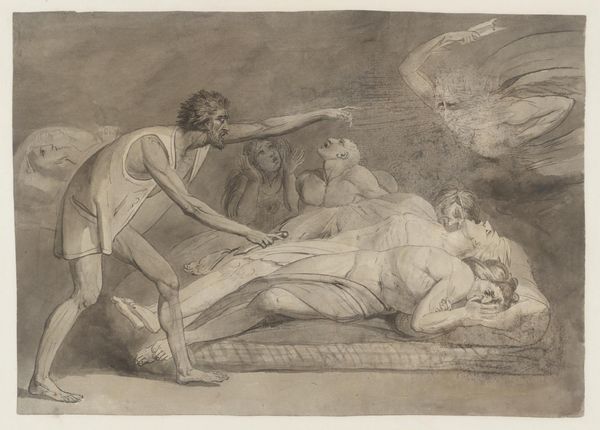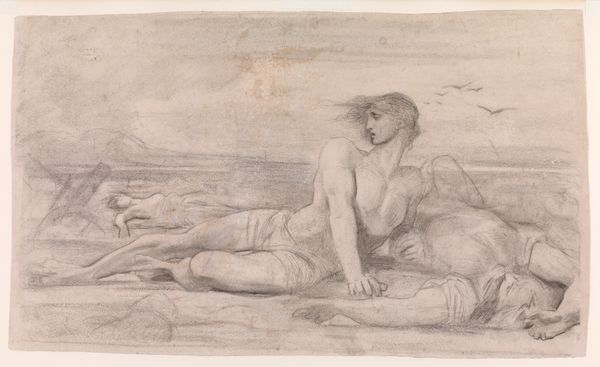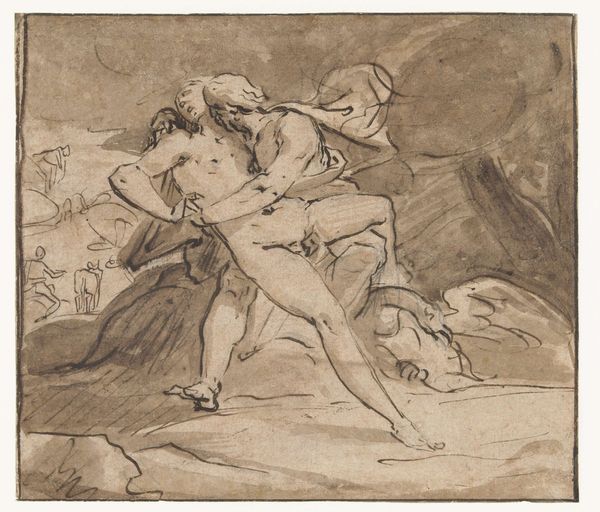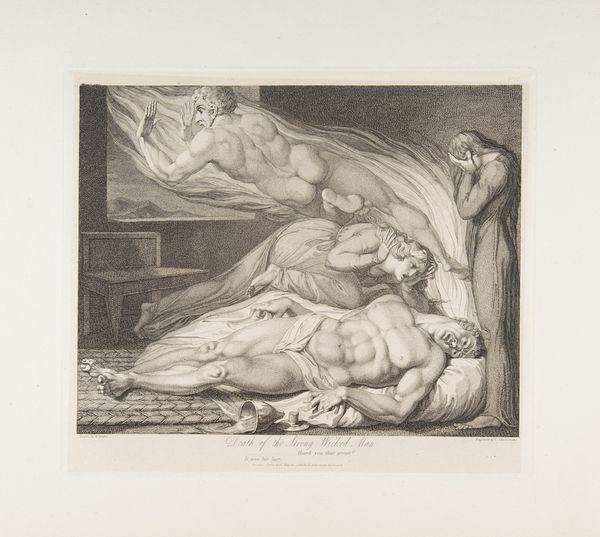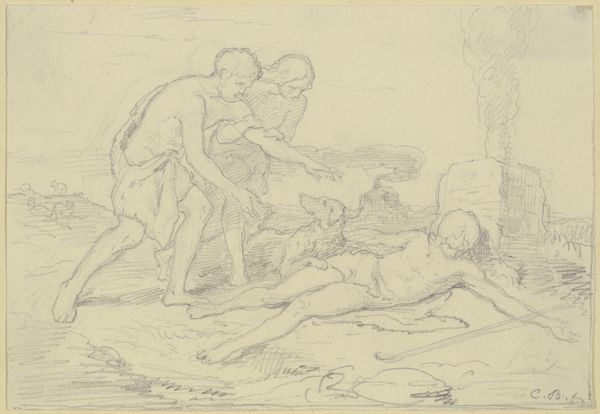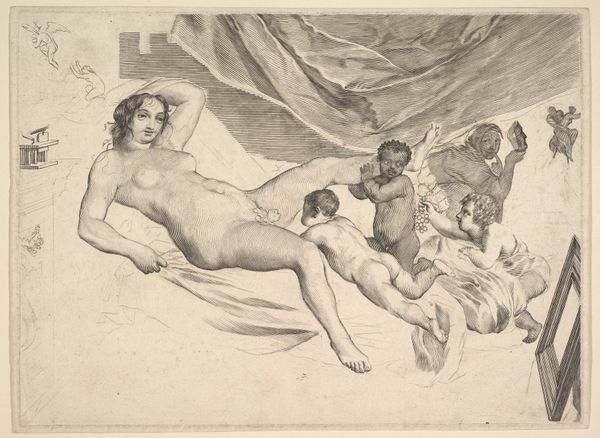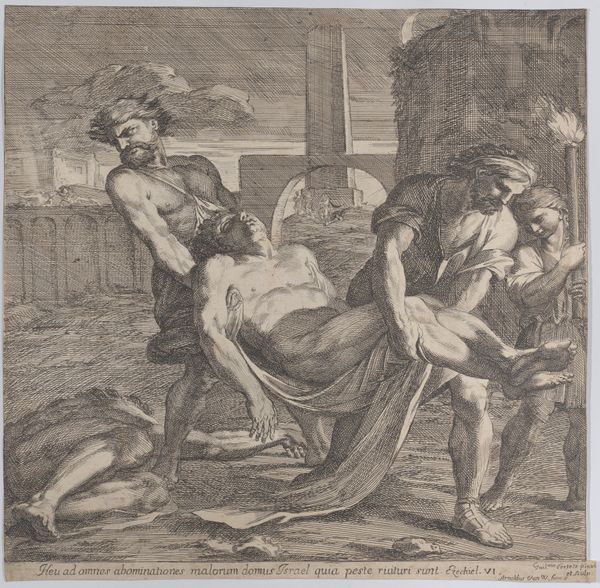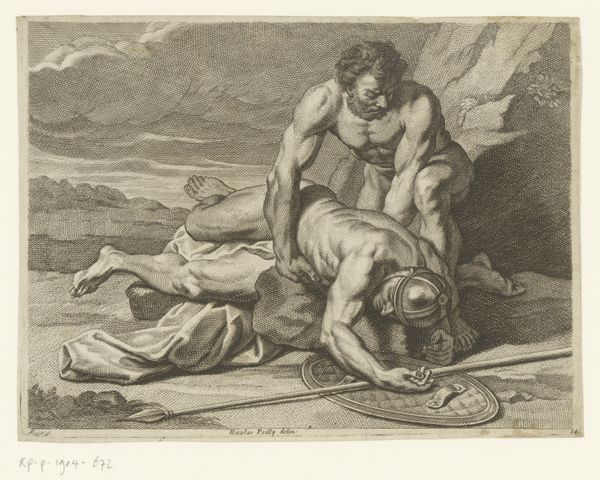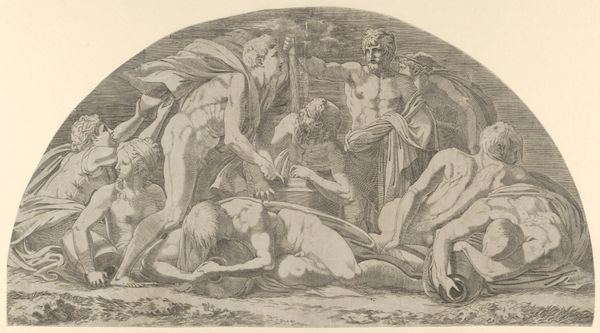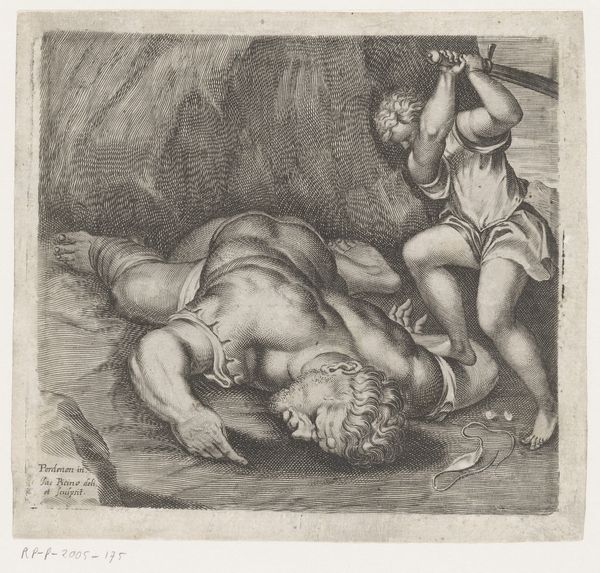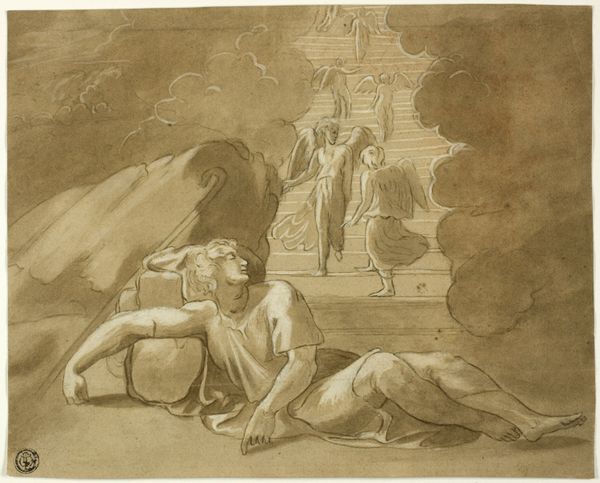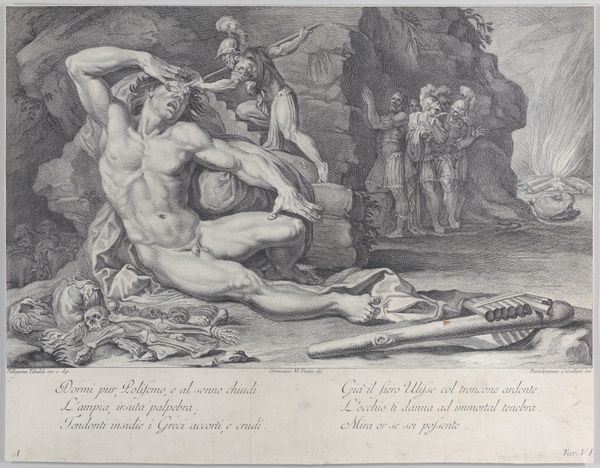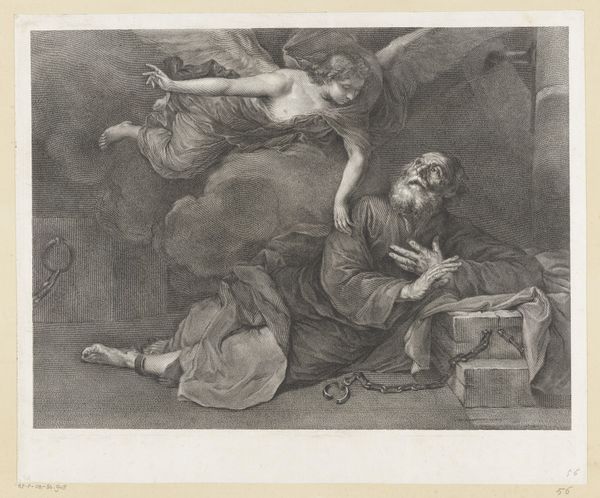
Dimensions: support: 318 x 451 mm
Copyright: NaN
Curator: Here we have William Blake's intriguing artwork, "The House of Death," held within the Tate Collections. Editor: A sketch of spectral dread, it feels biblical yet intensely personal. It’s like a nightmare distilled into grey washes. Curator: Note how the composition directs our gaze—from the frantic figure on the left, gesturing dramatically, to the reclining figures and finally upwards towards the ethereal presence above. Editor: That pointing man, is he leading us to death, or trying to ward it off? The ambiguity is delicious. It's a stark image, really. Curator: Indeed. Blake uses line and wash to create a sense of unease. The lack of firm outlines adds to the dreamlike quality. Editor: I love how the lines convey emotion. It feels urgent, whispered, as if on the edge of madness. It’s Blake at his most evocative. Curator: Yes, the overall effect is a potent visual metaphor for mortality. It offers a stark look at the border between life and something beyond. Editor: A potent piece, leaving us unsettled but deeply contemplative.
Comments
tate 7 months ago
⋮
http://www.tate.org.uk/art/artworks/blake-the-house-of-death-n05192
Join the conversation
Join millions of artists and users on Artera today and experience the ultimate creative platform.
tate 7 months ago
⋮
Blake believed John Milton to be England’s greatest poet, worthy of emulation but by no means above criticism. This drawing illustrates lines from Milton’s Paradise Lost (1667), which describe a ‘Lazar-house... , wherein were laid/Numbers of all diseas’d, all maladies/... Dire was the tossing, deep the groans, despaire/Tended the sick... / And over them triumphant Death his Dart/Shook’. Blake claimed that his epic poem, Milton 1804, had been ‘recited’ to him by Milton’s spirit. In this poem Blake criticises the poet’s ideas, and Milton asks for his errors to be corrected. Gallery label, September 2004
